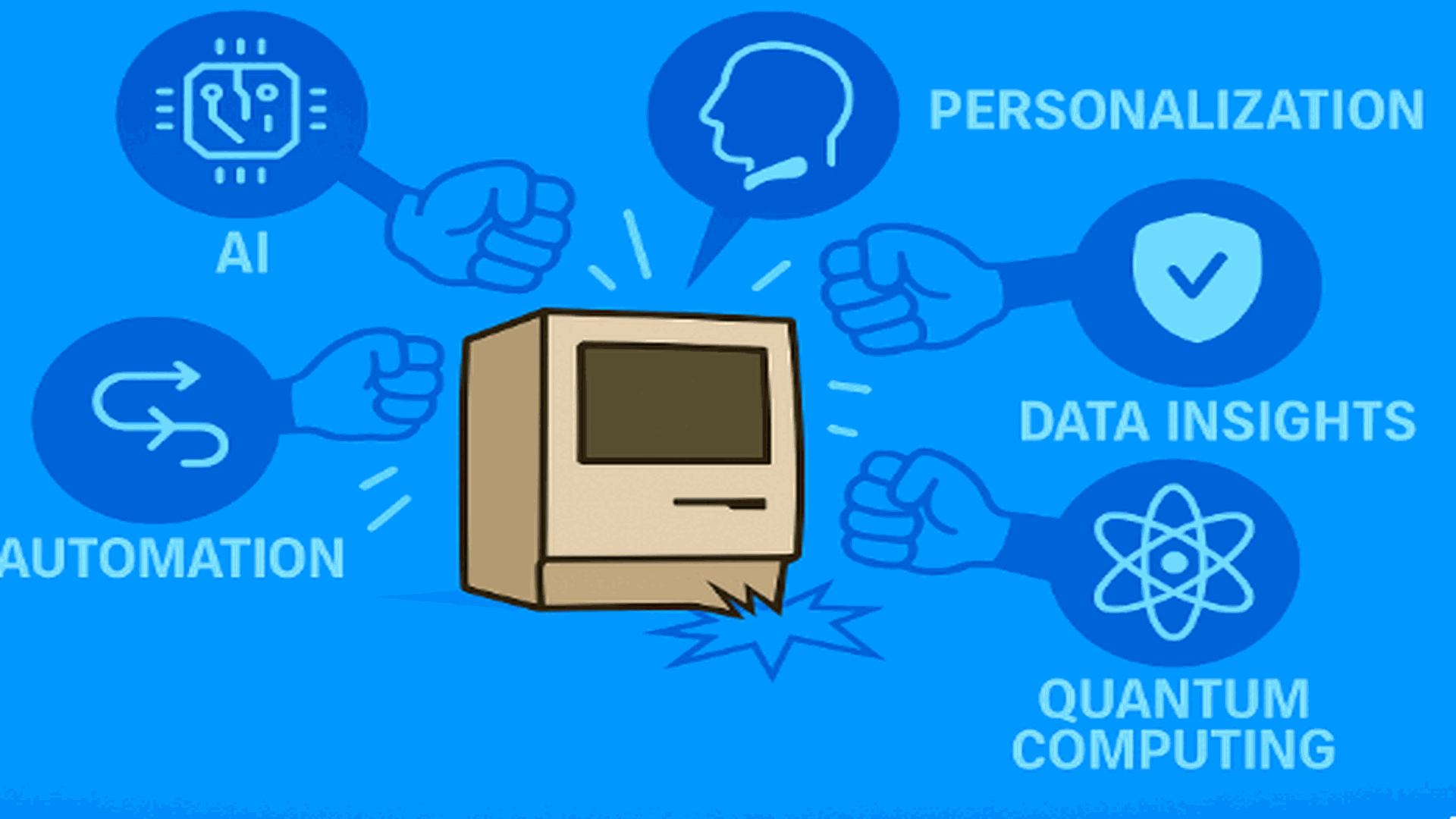Is the Dilemma of Build vs Buy Insurtech Solutions Still Relevant?

AI and machine learning are now pivotal in reshaping how insurers operate— they push up the efficiency factor, positively impact efficiency, personalize services, and improve customer interactions. With the digital wave that has only been surging and the phenomenal rate new technology is emerging, AI-driven platforms have become increasingly sophisticated and essential.
In the build vs. buy debate, insurers are weighing in on whether their in-house tech teams can match insurtech companies' innovation speed.
According to Forrester Research's early 2024 report, 45% of insurance firms are now implementing AI-driven solutions to enhance underwriting, claims processing, and customer service. Yet, as the urgency to integrate AI grows, insurers face a crucial decision: build custom solutions in-house or adopt third-party platforms. This decision isn't just about technology—it's about positioning themselves for future success in a rapidly evolving market.
Consequently, the discussion evolves from a simpler binary build vs buy dilemma to a more complex consideration: Is investing in external technology the best choice?
The Reality of In-house Development Teams in the Age of AI
Hiring an IT professional, especially for an emerging technology role, is a resource-intensive process that comes with significant challenges for insurance companies.
For an insurance company aiming to integrate AI into its operations, the financial implications are substantial. An experienced in-house software developer can command an annual salary ranging from $100,000 to $200,000. If a team of experts is required, this figure multiplies, resulting in a hefty annual expenditure year on year.
The inherent difficulties of launching new AI-powered solutions in-house: 87% of AI projects fail to launch and long time horizons are required before prototypes can even begin to be tested.
Beyond salaries, the cost of development tools and software adds to the financial burden. Developing a quality AI-based insurance platform requires a dedicated team, including product managers, software engineers, data engineers, operational experts, staff to integrate data models, personnel to manage onboarding and training, and staff to quantify value generation.
Most insurance carriers are opting for a third-party solution with established expertise as the more practical choice.

Why Build vs Buy is no longer a Debate for Small and Mid-size Insurance Carriers
In the early days of technological innovation, insurance carriers had little choice but to develop solutions in-house. These homegrown, legacy systems served the industry faithfully for years, providing stability and reliability. However, the rise of the digital era has drastically altered the reality, pushing insurers to re-evaluate their technological infrastructure.
With digitization at every level of the value chain, CIOs are focused on agility and speed. To support this transformation, the C-suite team is growing to include specialized roles like Chief Digital Officer, Chief Data Officer, and Chief Innovation Officer, each focused on leveraging new technologies to drive growth and efficiency.
Insurance companies are not software companies. Building in-house insurance software is similar to a bakery deciding to start its farm to grow and harvest wheat for its flour. Insurance companies of all sizes know there are better options for them.
Time waits for no one and if insurance organizations are looking at augmenting their technical teams to modernize their existing systems, their competition might be opting for a well-evaluated insurtech AI integrated platform that gives them all the features they need in a shorter time frame - and that often is the clincher in the build vs buy insurtech debate.

What Insurtech Brings to the Table
Collaboration has now become the norm for the insurance industry - why spend time and effort on developing new insurance technology when cutting-edge software products are already available? The rise of digital-native and digital-first carriers and MGAs has made traditional insurance companies look to quickly innovate or be left behind.
-
Insurtech Opens Dialogue for Product Innovation
When it comes to buying insurance technology, there are two big perks: Quick access to a ton of functionality along with a range of features and the specialized know-how of the vendors. These insurtech solutions take the pressure off insurers to be tech experts themselves.
Plus, insurtech providers tailor their products to specific lines of business or even customize them for individual insurers. For instance, a mid-size insurance carrier with a small underwriting team was responsible for assessing 30,000 properties. There wasn’t enough time to manually inspect each one. By buying an insurtech AI-provided solution, the carrier could access high-resolution imagery and computer vision models, the new system can quickly identify at-risk properties. This technology automates straight-through processing for low-risk properties while flagging high-risk ones for further review, allowing the underwriting team to focus where needed most.
-
Enhancing Insurance Big Data Strategies Through Insurtech Solutions
Insurers have always been protective of their volumes of big data. Keeping this data proprietary is possible only if you have the resources to build your methods for data analysis. This has not proven to be practical because even the largest insurers with numerous claims often lack comprehensive data on specific aspects such as particular features or litigation scenarios for a 3600 view.
89% of companies perceive insurance big data as a necessary step toward digital transformation. - Accenture
Insurtech partnerships can address these gaps. These external vendors aggregate large datasets from various public and private sources, providing extensive, anonymized, and aggregated data. This broader data access allows for more efficient and accurate training of AI models, significantly improving your organization's predictive analytics and decision-making capabilities.
-
Identifying New Customers and Speeding Up the Quote Process
Modern insurtech platforms help identify new customers and speed up the quote process by leveraging advanced technologies such as AI, Generative AI, machine learning, and data analytics. These platforms integrate data from various sources to create detailed customer profiles, enabling precise targeting and personalized marketing. AI algorithms analyze customer behavior to predict interest in insurance products and AI can streamline their quoting processes, providing instant quotes by analyzing data from various sources. This not only enhances the customer experience but also ensures more accurate pricing based on comprehensive risk assessments. Additionally, insurers can use AI to automate customer interactions and claims processing, which further accelerates service delivery and improves customer satisfaction.
-
Scalability
Insurtech software outperforms in-built solutions on scalability due to its cloud-based infrastructure, which allows for dynamic resource allocation and elastic scalability. Insurtech platforms are often built with modular and microservices architecture with API layers, enabling easy integration and scalability of individual components as needed. This flexibility allows insurers to scale specific functionalities without overhauling the entire system
-
Speed to Market
Gone are the days when insurers could introduce a product and let it run unchanged for a decade. Nowadays, insurance product lifespans are much shorter. The quicker insurers can analyze and rate risks, the better they can react to market trends and adjust coverage terms on the fly. In this pursuit of speed, technology plays a crucial role. Solutions like document creation, automation, and distribution tools streamline processes and integrate seamlessly with existing systems, enabling insurers to bring products to market faster and more efficiently.
-
Future Proofing with Continuous Innovation
SimpleSolve Inc. provides frequent software updates to ensure that its customer platforms stay current with the latest technological advancements and regulatory changes, this ensures continuously enhanced functionality and security. We also invest heavily in research and development to explore new technologies, such as AI, blockchain, and IoT, ensuring our solutions remain at the cutting edge of the industry. The SimpleINSPIRE core insurance platform is built on a visionary API-based architecture that offers clients game-changing products and services through its continuously expanding ecosystem partners.
I hope this helps navigate the decision to integrate AI into your organization. Both building and buying have their pros and cons. The key is to prioritize your needs and assess what is feasible and realistic for your company. By doing so, you can ensure that the result not only meets but exceeds your expectations, making the journey worthwhile and beneficial for your business. We would be delighted to have a more detailed discussion with you about our insurtech platform
Topics: Legacy System Modernization







